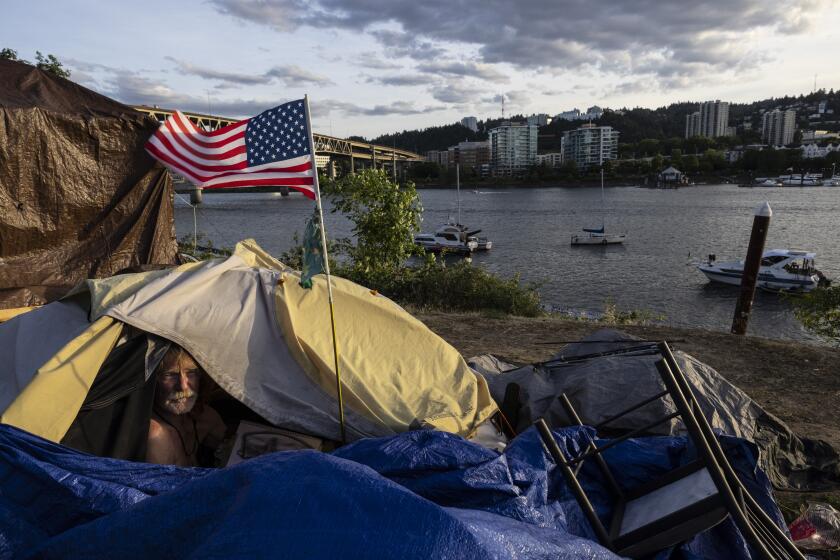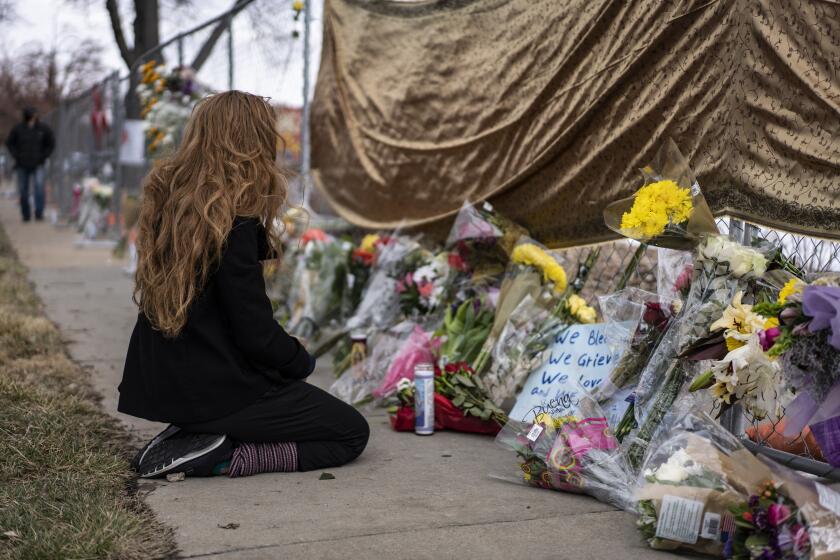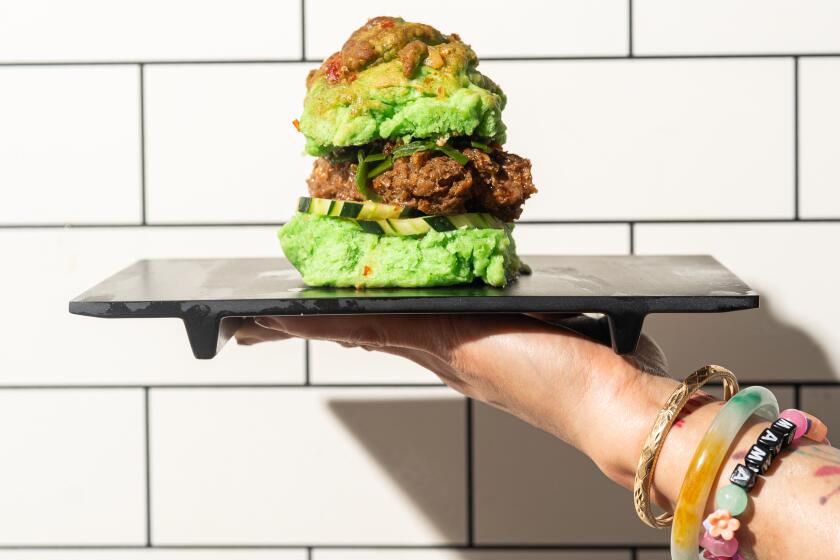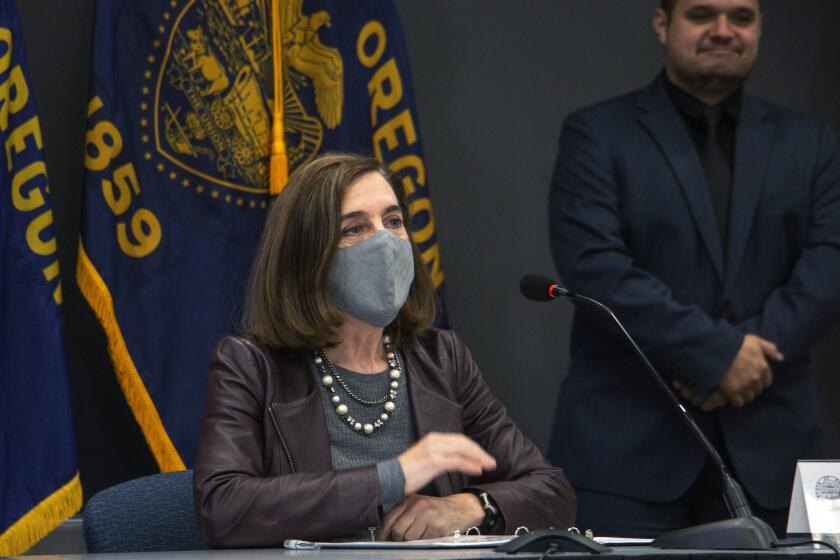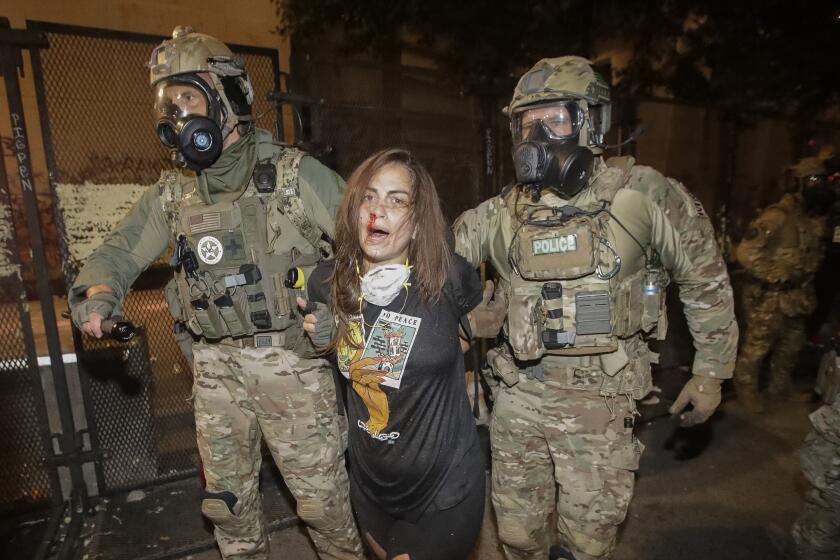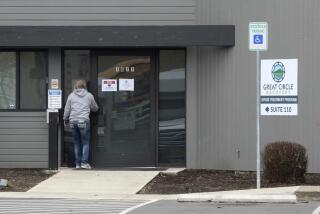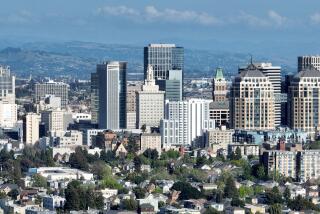‘A dangerous time’: Portland, Ore., grapples with record homicides
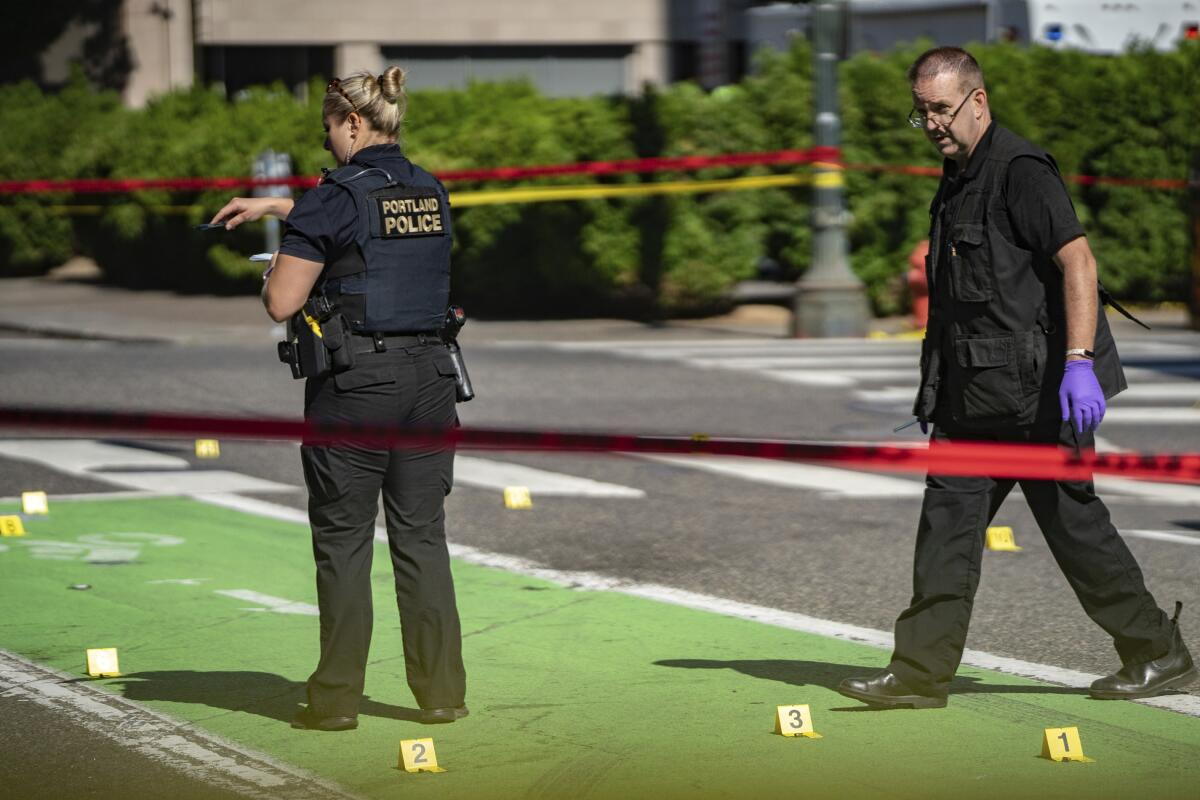
- Share via
PORTLAND, Ore. — It was nearly last call on a Friday when Jacob Eli Knight Vasquez went to get a drink across the street from the tavern where he worked in northwest Portland — an area with a thriving dining scene, where city-goers enjoy laid-back eateries, international cuisines and cozy cafes.
The 34-year-old had been at the pizza bar only a short time when shots rang out. Vasquez was struck by a stray bullet and died at the scene.
His killing in late September was one of the 67 homicides this year in Portland — surpassing its previous record of 66 slayings for a full year, set in 1987.
In a metropolis racked by gang violence, fear and frustration have settled over Portland as stories like Vasquez’s have made some wary to go out at night. Unlike previous years, more bystanders, neighbors and friends are being caught in the crossfire — from people mourning at vigils and sitting in cars to children playing in a park.
“People should be leery because this is a dangerous time,” said Lionel Irving Jr., a lifelong Portland resident and a gang outreach worker.
Portland’s police department is struggling to keep up amid an acute staffing shortage and budget cuts. Now, the liberal Pacific Northwest city is implementing novel solutions aimed at improving safety, including adding traffic barrels to prevent drive-by shootings and suspending minor traffic stops so that officers can focus on immediate threats.
Until a year ago, Portland, Ore., was best known nationally for its ambrosial food scene, craft breweries and ‘Portlandia’ hipsters.
But critics say Oregon’s largest city, home to more than 650,000 people, is flailing.
“Let’s please untie the hands of our law enforcement officers,” Vasquez’s brother-in-law, Don Osborn, said outside the business where Vasquez was slain. “I believe if the proper tools were in place for our law enforcement officers, this wouldn’t even have happened.”
So far this year, Portland has had about 1,000 shootings, 314 people have been injured by bullets, and firearms have accounted for three-quarters of homicides.
Police say many shootings are linked to gangs, fights and retaliation killings, but they are also affecting bystanders.
Virus restrictions are being lifted, but recent shootings in Orange County, Georgia and Colorado may spur anxiety about reentering public spaces. Here are some safety tips.
Nine-year-old Hadar Kedem told city leaders about a dangerously close call when she was caught in gunfire earlier this year.
Hadar had been playing with her father, brother and dog at a northeast Portland park when a group of people in ski masks began shooting. Hadar and her family dived for cover behind a metal equipment bin. One bullet landed within feet of the fourth-grader.
“I know that not only do I want change, but everyone wants change,” Hadar said during a City Council meeting last month. “I want to feel safe.”
Nationally, homicides increased by nearly 30% from 2019 to 2020, based on FBI data. However, in Portland, deadly violence is increasing at a faster rate than nearly all major cities, with an 83% increase in homicides in 2020.
Many Portland chefs and restaurateurs are finding the wherewithal to look forward.
Portland has seen more homicides in 2021 than some larger cities, including San Francisco, and it’s had twice as many slayings as its larger Pacific Northwest neighbor, Seattle. Other hard-hit Western cities include the Albuquerque metropolitan area, which has about 679,000 residents and has seen a record 97 homicides this year.
Portland police have struggled to quell the violence, with the department 128 officers below authorized strength. Since August 2020, about 200 officers have left the force. In their exit interviews, many cited low morale, lack of support from city officials and burnout from months of racial justice protests, which often ended in plumes of tear gas and confrontation but have largely died down since last summer.
“We are running on fumes. There’s no way we can investigate thoroughly, and correctly, all these shootings,” said Daryl Turner, executive director of Portland’s police union.
Turner says the city will need to hire 840 officers over the next five years to implement proper community policing and keep Portland safe. Besides staffing, Turner said the increase in violence is directly related to budget cuts.
News Alerts
Get breaking news, investigations, analysis and more signature journalism from the Los Angeles Times in your inbox.
You may occasionally receive promotional content from the Los Angeles Times.
Amid calls by some to “defund” the police, city leaders slashed $27 million from the police budget last year — $11 million because of the pandemic-caused budget crisis — a decision that Turner says has cost lives.
Officials also disbanded a specialized unit focused on curbing gun violence, which had long faced criticism for disproportionately targeting people of color.
Insufficient manpower and funds have forced officials to implement nontraditional ideas in an attempt to hinder gun violence.
Oregon Gov. Kate Brown says all teachers, educators, support staff and volunteers in K-12 schools must be vaccinated against COVID-19.
Earlier this month, additional traffic barrels were installed in a southeast Portland neighborhood that has been plagued by shootings — some of which were linked to high-speed drivers. City Commissioner Jo Ann Hardesty said the hope is that the traffic changes will slow activity at gun violence hot spots and make it harder to “both commit a crime and get away with it.”
“This is an all-hands-on deck situation where government needs to dig deep, think creatively,” Hardesty said. “From police to community-based organizations to infrastructure design — we all have a role to play in this emergency.”
In addition, Portland Mayor Ted Wheeler announced in June that officers are no longer being directed to stop drivers for low-level traffic violations.
Wheeler and Police Chief Chuck Lovell said this was in response to data showing a disproportionate impact on Black drivers, but also because the city doesn’t have enough officers.
Neighborhood advocates or vigilantes? A group in Portland makes life tougher for the homeless
But experts, police and residents say a shift of resources and added traffic barrels are not nearly enough to counter the most violent year in the city’s modern history.
“This past year has shattered anything that I’ve ever witnessed,” said Irving, the outreach worker and a former gang member. He said he does not see gun violence slowing without more officers on the street, a specialized gun violence unit and investment in community-based organizations.
Four cultural institutions in Portland’s Old Town Chinatown neighborhood recently sent a letter to officials demanding immediate action to keep visitors, staff and volunteers safe.
The increasing violence and pleas for cities to do more have compelled some areas to switch from curbing funding to police departments to restoring funding.
Oakland and Portland, Ore., have sued the Trump administration over its deployment of federal law-enforcement officers to clamp down on protests.
In major cities across the country, portions of police budgets are being restored. From Los Angeles to New York, some law enforcement departments that underwent massive budget cuts, amid nationwide protests over the murder of George Floyd, have had local leaders restore funds or implement new programs or units.
In Portland, there’s money available for public safety in the form of a $60-million general fund surplus.
The City Council can use half the money, which came from business taxes last year and was far more than anticipated, however it wants. Whether a significant portion will go to the police department has yet to be determined.
“We have to realize that everybody has a role, from community members to the police department,” Irving said. “No one entity is going to solve gun violence.”
More to Read
Sign up for Essential California
The most important California stories and recommendations in your inbox every morning.
You may occasionally receive promotional content from the Los Angeles Times.
